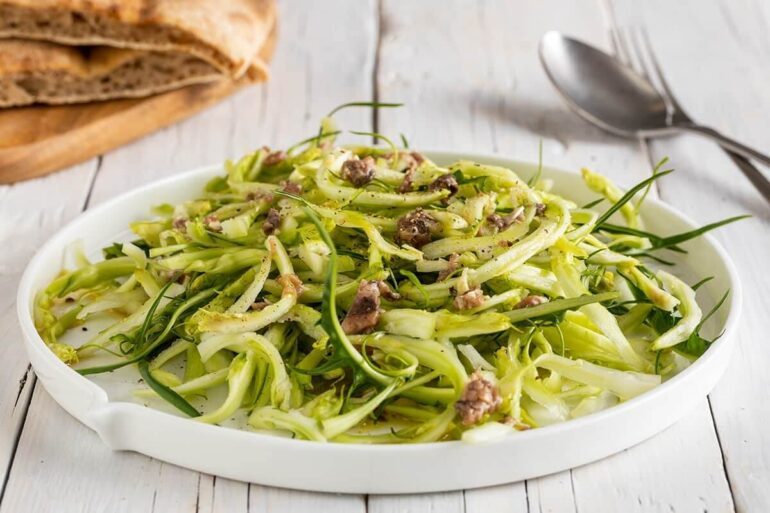A dish for every season
Roman cuisine, including ancient Roman Jewish cuisine, is not for delicate palates. Based on the seasonality of the harvest of the immense Lazio countryside and on a tradition of field workers and sheep/pork farmers, this area of Italy has not known the culinary splendor of the great kingdoms of the north and of the south of the peninsula. In Rome you don’t usually eat the Mediterranean cuisine with the delicate, sweet and gentle flavors of the south, nor the round and intense flavors of the long cooking of the Nordic tradition. In Rome the flavors are pungent and precise, the ingredients few and very distinct, nothing opulent but all of great taste.
Being a cuisine born to be prepared quickly for the workers and to be nutritious to bear the hardships of peasant life, the preparations of this culinary tradition are almost all short. But we must not be fooled because the preparation time often does not correspond to the ease of execution. Indeed, many of the most popular dishes of Roman cuisine are based on two or three ingredients and on the precision of the technique to assemble them, which only experience can make up for. Nevertheless, there are exceptions to the general rule: some longer preparations like ‘spezzatino’, with many ingredients like ‘minestra d’arzilla’ and other “more Mediterranean-like” dishes with tender and delicate flavours as “pomodori al riso”, a summertime classic.
These being the characteristics of Roman cuisine, most of the taste is based on the single basic ingredient. Some ingredients are used all year round such as guanciale, black pepper, pecorino and the beloved veal, used in many dishes, such as piccatina, involtini alla romana and saltimbocca. But, many ingredients instead strictly depend on the time of year and dictate the seasonality of this local cuisine. So, let’s go find out what the latter are through four traditional dishes based on the seasonality of the ingredients.
Summer: Pomodori al riso
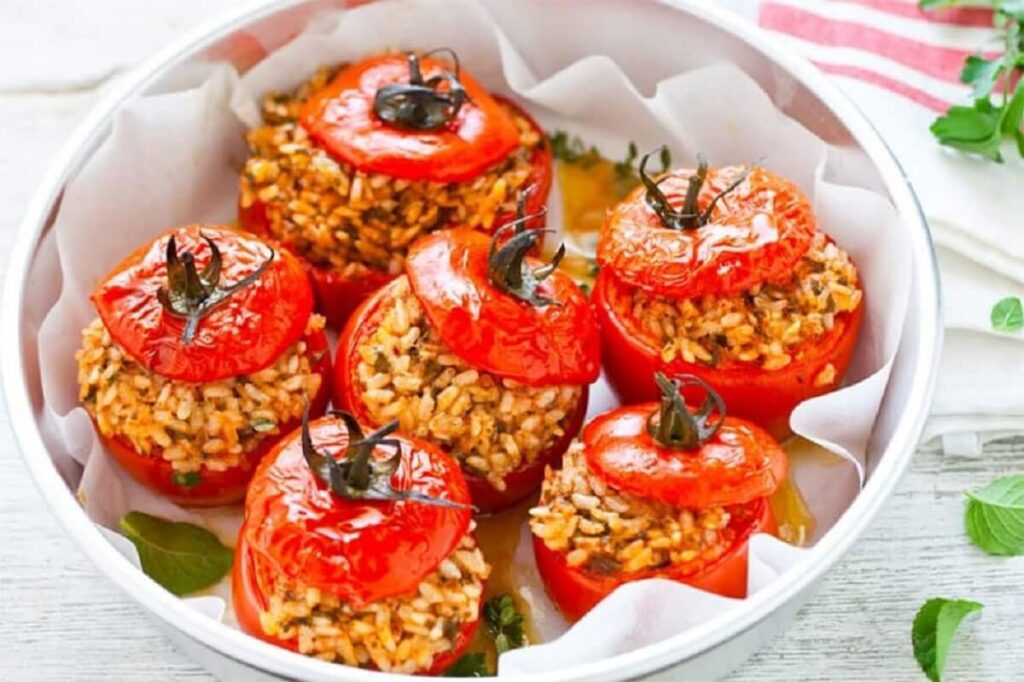
Roman summers are long, sunny and incredibly hot, often in mid-July before 6 pm it is not possible to ingest much more than a cold coffee and a fruit sorbet. But when there is room for something, the great protagonist is the fragrant and watery tomato. In Rome, street takeaways as well as large restaurants serve ‘pomodori al riso’ (rice stuffed tomatoes) from June to September: large ripe red tomatoes stuffed with rice marinated in garlic, oregano and tomato juice for one night and then cooked in the oven with potatoes and served cold or at room temperature. The best places to eat them are grocery stores or ‘rosticcerie’, like the iconic Venanzio in Trastevere.
Autumn: Prosciutto e fichi settembrini
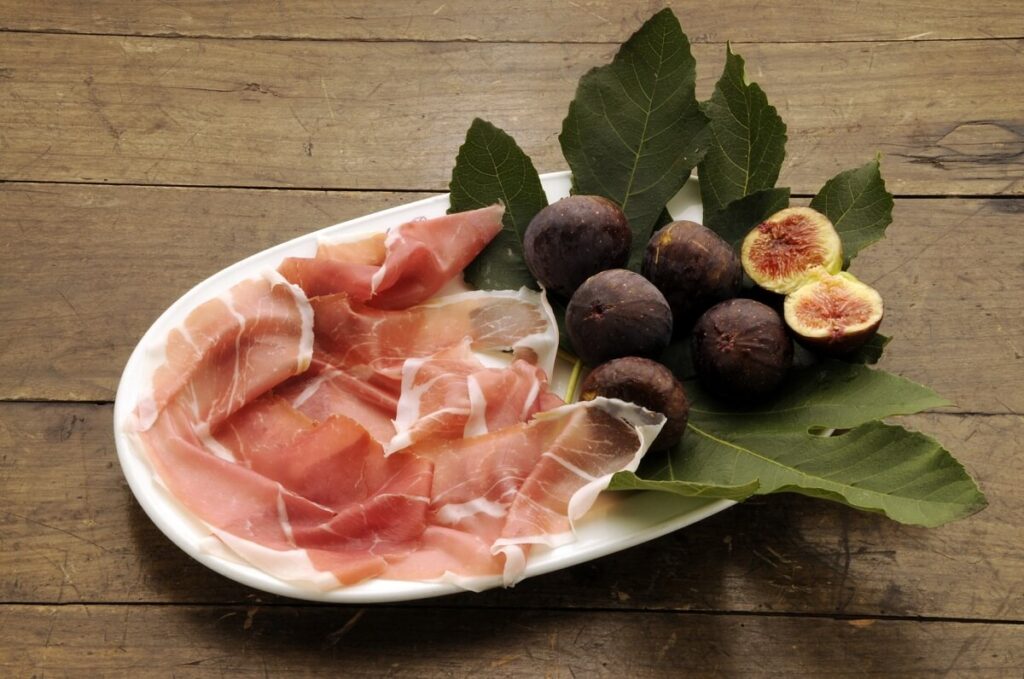
Fruit and vegetables in Italy change in color, quality, type and taste in every different region and village of the country. In Rome and Lazio, fruit trees have produced a quality of medium-sized figs, dark purple outside, white and red inside, succulent and very sweet. These are precisely the famous ‘September figs’ that dominate the autumn in Rome and accompany the end of summer with a sweet note before the beginning of the long winter. Often, they are served with a ‘prosciutto’, cut into thin slices to seek the contrast of flavor. The best way to taste them is by buying them in one of the 200 local farmer markets of the city (open from Monday to Saturday, only in the morning) and taking them to the park for a simple and unexpected picnic, perhaps accompanied by a salty white pizza by the slice (‘pizza bianca’).
Winter: Minestra d’arzilla and Puntarelle
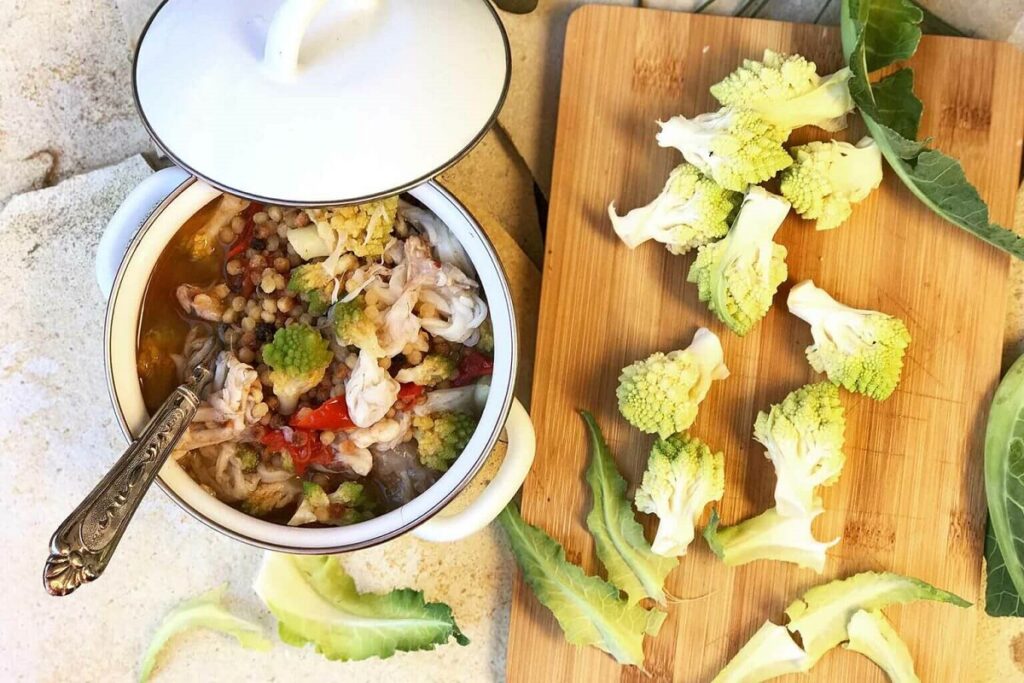
Two of the most representative vegetables of the capital’s winter cuisine are undoubtedly ‘broccolo romanesco’ (which despite being called broccoli belongs to the cauliflower family) and ‘puntarelle’, small hedgehogs expertly cut away with a specific curved knife from the roots of wild chicory and served as soon as cut as a raw salad with a powerful dressing based on garlic and salted anchovies. While ‘puntarelle’ can never be missing as a side dish on Roman tables from November to March, ‘broccolo romanesco’ is used for many different dishes, from first courses to appetizers. Of particular interest is its use in a traditional dish that is no longer very common: ‘la minestra di broccoli e arzilla’ (the arzilla soup). The Romanesco broccoli in this difficult recipe that only some housewives and a few trattorias now serve, is combined in a soup with long broken pasta and ray (‘arzilla’ or ‘razza’), a fish with great flavor. Among the few trattorias that still serve it in winter time there are: Menenio Agrippa (Montesacro), Osteria Bonelli (Tor Pignattara) and Armando al Pantheon (Historical Center).
Spring: Vignarola
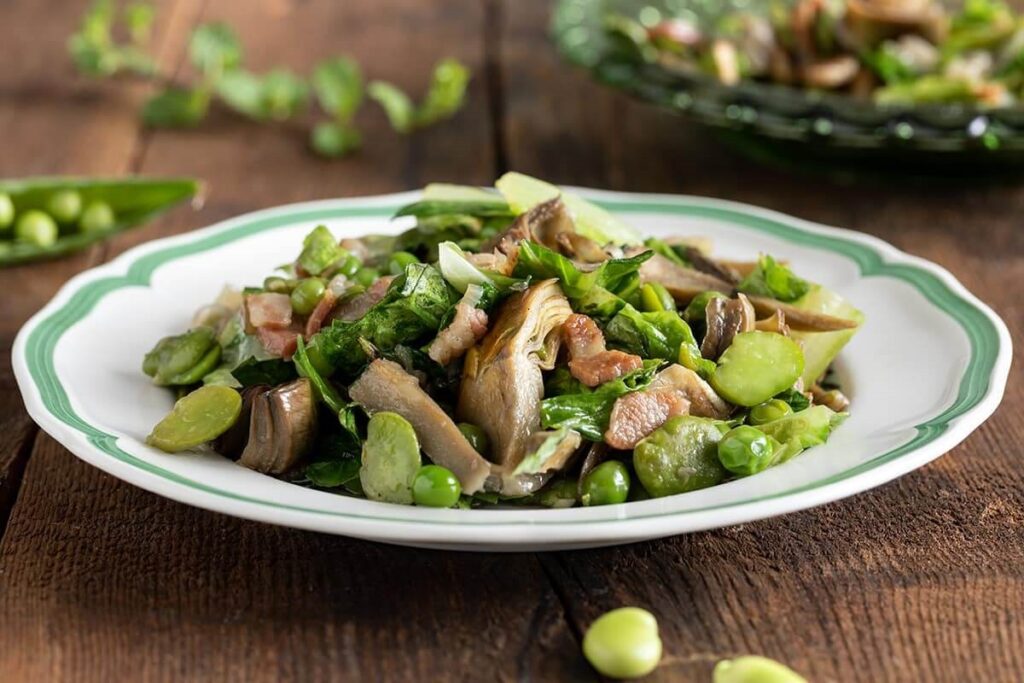
Rome in spring is a marvel for the eyes and the palate. With the explosion of flowers on the trees, the markets are filled with the scent of the greenest vegetables, which like little jewels are rare and last for a few weeks. To complete the triumph of Roman spring, a recipe was invented by the farmers many moons ago, which unites all these elements in a unique spring concert: the ‘vignarola’. This dish, traditionally a side dish (even if it can also be used as a sauce for pasta or as a vegetarian main course), combines the first small and tender lettuce leaves, fresh spring onions, peas and fresh broad beans (fava beans) and ‘mammole’ small and purple artichokes, in the same abundantly oiled pan, soaked in dry white or red wine (depending on taste) or vinegar.
INSPIRATION
Must-Try-Before-You-Leave Roman Dishes

